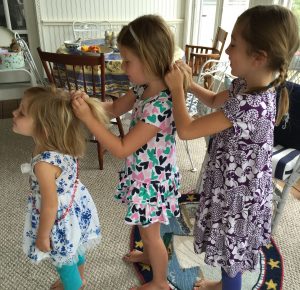
Every afternoon at 3:30, Jennifer and Ben’s mother arrives at school in her expensive car. They hurry back to an immaculate home filled with evidence of their parents’ success – fine furnishings, plush carpeting, expensive toys, and a full-time housekeeper. After the children change into play clothes, they say good bye to their mother and set off on a prearranged program of activities. Their mother then drives back to work.
This is an extreme example of the new life style that many children now have since their mothers have joined the work force. According to the US Department of Labor, 70 percent of all mothers with children under 18 work, and that number is growing rapidly. By 2020 a sizable number of the 75 million women in the labor force will be working mothers, projects the Bureau of Labor Statistics.
What has caused the number of working women to increase by nearly 30 percent in the past 25 years? What is the effect of the higher percentage of working mothers? Encouraged by the liberation and exploration movement of the 1960s, women found new incentives to break away from traditional occupations. In spite of roadblocks such as a short supply of day-care facilities or limited opportunities for promotion, they have paved new avenues in many fields. The abilities and contributions by women are now being recognized in business, law, publishing, religion, and other careers.
The motivation to work as well as the effects of working are highly individual for each person. Whether she’s a waitress or a bank officer, working may be her means of supporting her family or boosting its income, self-fulfillment or escape from boredom. Yet a common thread seems to be emerging. Gloria Norris and Jo Ann Miller, the authors of “The Working Mother’s Complete Handbook” described the “new mother” as one who has to juggle her job, her family, and her guilt. They report on a survey of working mothers which indicated they often worry about not devoting enough attention to their families because they’re not around all day.
A mother’s good intentions would want to make up for the lack of quantity time with quality time, but the problem remains that when juggling gets difficult, it’s often the children who get dropped.
Guilt doesn’t go away easily, perhaps because mothers don’t need glaring statistics, such as the rising number of suicides among children, or the high rate of teenage pregnancies, to know how unsolved problems and lack of supervision can put a strain on children.
Advertising has helped to create the image of the “superwoman” who kisses the children at eight, works all day, and dances all evening. Guilt strikes again for those who don’t live up. It seems about time that society responds to the trend of the day and works out some solutions. Support through providing flexible working hours, part-time employment, and highly qualified day care are among the steps to relieving the pressure on working mothers.
But beyond needing to help working mothers have better homemaking options, society seems to have forgotten how to support a time-honored occupation – the career of homemaking. Is it heading for gradual oblivion? Is our most important job, raising children, going to be a nonexistent career replaced by day-care specialists, baby sitters, and housekeepers? Will their standards and ideals match those of the parents? For parents and those young people who are still choosing to be full-time homemakers, the job needs defending and defining. Maybe an announcement in the classified ads would help:
Originally published in the Christian Science Monitor